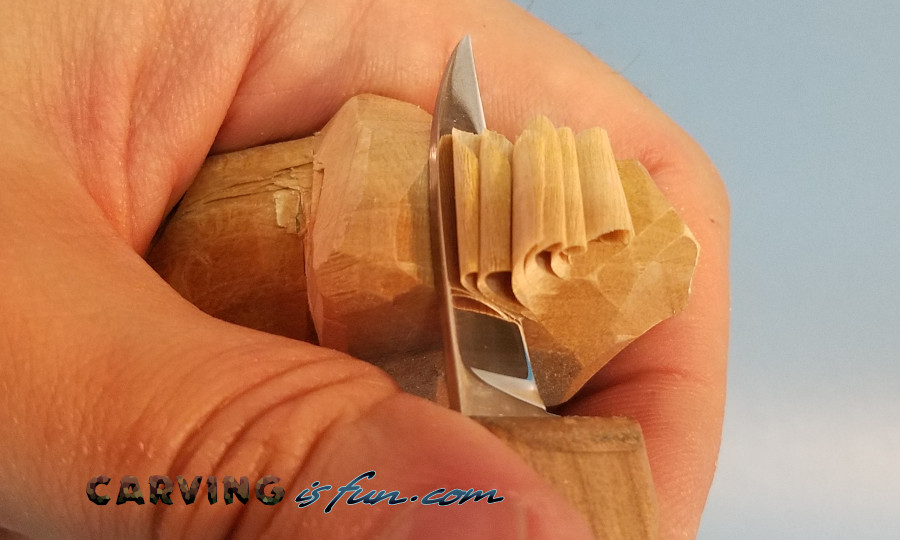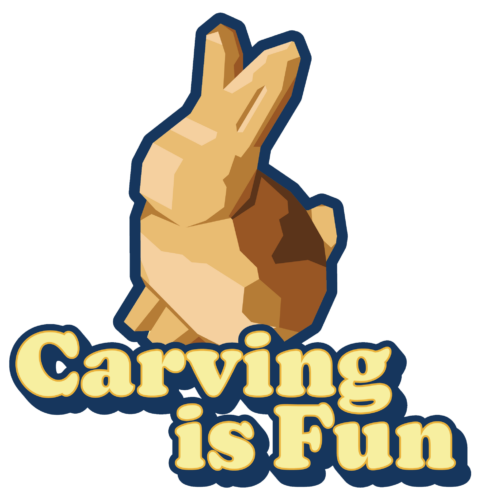You’ve just chosen one of the greatest and most calming hobbies: woodworking. There’s nothing like envisioning an image in wood and making it real, but what isn’t calming is using the wrong wood to get started. To get a handle on what you’re doing, you need easy wood to carve, but what would that be?
Basswood is the easiest wood to carve by hand or by machine because it’s lightweight, soft, and smooth. It has a fine, straight grain, even, and closed in its pores. It offers no resistance to a woodworker’s tools and creates an easy texture to shape.
If you’re interested in learning more about the qualities of this fine wood, why it’s the easiest to start with, and how to make other wood easier to work with, well then, you’ll have to keep reading the info we’ve got for you below!
Best Wood for Carving

In my professional opinion, basswood is the easiest wood to carve for 4 reasons,
- It’s soft
- It’s smooth
- It’s lightweight
- It doesn’t stink
Okay, so that last one is a personal reason, but everything else is important. What makes it so good? Two reasons:
- It has a fine grain
- It’s a soft hardwood
Grain in wood is the direction the cells of the wood fibers take throughout the lumber. Wood grain doesn’t always form in the same direction, and it’s important to cut with the grain. Carving against the grain makes you experience resistance, causing your tool to dig too deep into the wood and blunting it.
Basswood has a fine, or closed, grain, meaning it has little pores that make the wood consistent and smooth. Open pores in wood cells make the wood coarse and an open grain makes any stain you use appear blotchy. So, in addition to being easier to carve, basswood makes it easier to make your finished work look great.
Basswood is also considered a soft hardwood. That means it has low hardness and low density. It’s a lot softer and less dense than the hardwoods from the dicot tree category, making it light and easily malleable.
Because of these two qualities, basswood only weighs 26lbs/ft^3 and has a surface that is smoother than butter that easily lets you make the cuts you want at the depth you want.
Hardest Woods to Carve
It’s nice to know which wood is the easiest to work with, but even basswood doesn’t have all the qualities you want. Sometimes you want to challenge yourself or use a wood with a different grain or different natural color.
However, you might accidentally make things difficult for yourself, and one way to do that is to choose the hardest woods on the market. The hardest woods you can buy, according to the Janka Hardness Scale are:
- Lignum Vitae
- African Blackwood
- Royal Ebony
Lignum vitae is the highest, requiring 4,500lbf (20kN) to get half an 11.28mm ball bearing into the wood. Not only is it extremely hard, but it also weighs 79lbs/ft^3 and the grain is often severely interlocked.
Interlocked grain occurs when it spirals around the axis of a tree in one direction, and then suddenly reverses direction, making lignum vitae wood the most difficult to work. It can be done, with incredible results, but don’t start with it.
African blackwood has a much easier texture to work with. It has a straight grain that’s very fine and even, but it will blunt even your machine tools in no time because it takes 3,670lbf (16.32kN) to cut into it.
Finally, royal ebony wood is the “softest” of our hardest woods that require 3,660lbf (16.30kN) to dig into it. This wood is a gamble; it can give you straight, irregular, or interlocked grain, and will still blunt your instruments.
What Other Woods are Easy to Carve?

When you do want to move on from basswood, what could you move on to? Well, there are several other kinds of wood that are good candidates for carving, namely,
- Balsa
- Pine
- Poplar
- Butternut
These are good candidates because they each share many of the same qualities that basswood has. Here are the summaries of their qualities:
Balsa
- Hardness: 90lbf (0.4kN)
- Grain: Straight, open grain (open pores) with medium or coarse texture
- Softwood/hardwood: Hardwood
- Weight: 9lbs/ft^3
Pine (Eastern White)
- Hardness: 380lbf (1.7kN)
- Grain: Open-grain (open pores)/An even and straight grain with medium coarseness.
- Softwood/hardwood: Hardwood
- Weight: 25lbs/ft^3
Basswood
- Hardness: 410lbf (1.8kN)
- Grain Texture: Very fine/smooth/even
- Softwood/hardwood: Soft hardwood
- Weight: 26lbs/ft^3
Butternut
- Hardness: 490lbf (2.2kN)
- Grain: Open-grain (open pores)/ straight with a medium-coarse texture
- Softwood/hardwood: Hardwood
- Weight: 27lbs/ft^3
Poplar
- Hardness: 540lbf (2.4kN)
- Grain: “Poplar typically has a straight, uniform grain, with a medium texture.”
- Softwood/hardwood: Hardwood
- Weight: 29lbs/ft^3
Although most of these are classified as hardwoods, they are still among the softest woods that require the least amount of force to cut into because of their low density. The rough texture that some of these woods have will just mean that you will want to be careful with the direction of the grain.
How to Make Wood Easier to Carve
What if you don’t have the easiest wood to work with available? In trade as old as woodworking, there’s got to be a way to make your wood easier to shape and cut, right?
There are two common issues with the wood you use that make it hard to carve:
- It has too much moisture
- It’s too dry and hard
It would be great to start a project with the right wood every single time, but since that skill only comes with a ton of experience, the rest of us need some help with what we have.
When your wood is green and still has a lot of moisture, you need to be careful how you dry it. As it dries, your wood will shrink, making it prone to cracks. Try to air dry it out of the sun long and slow, or buy kiln-dried wood.
So what about the dryness problem? A common suggestion is to soak your wood in water until it’s fully saturated to try to make it soft. I’m going to level with you:DO NOT soak your wood in the water! This causes several issues, including but not limited to,
- Discoloration of the wood
- Formation of cracks when dried
- Miscalculations from wood expansion
Instead, go with a spray bottle with isopropyl alcohol and water mixture of at least 50/50. Opt for more alcohol when possible. Using strictly alcohol works great, but it’s expensive, so that’s why we mix.
Using a spray bottle with this mixture means that instead of saturating the entire piece of wood, you’re able to soften just the section you need, and since alcohol evaporates so quickly, you don’t have to worry about any discoloration or other long-term damages of your work.
Conclusion
Think you’ve got it now? We’re not really worried about you. We know you’re passionate about this hobby because you’re willing to learn, and we’re glad because we’d hate to see you give up on a hobby that can bring you an extraordinary amount of joy. We look forward to your masterpieces!

